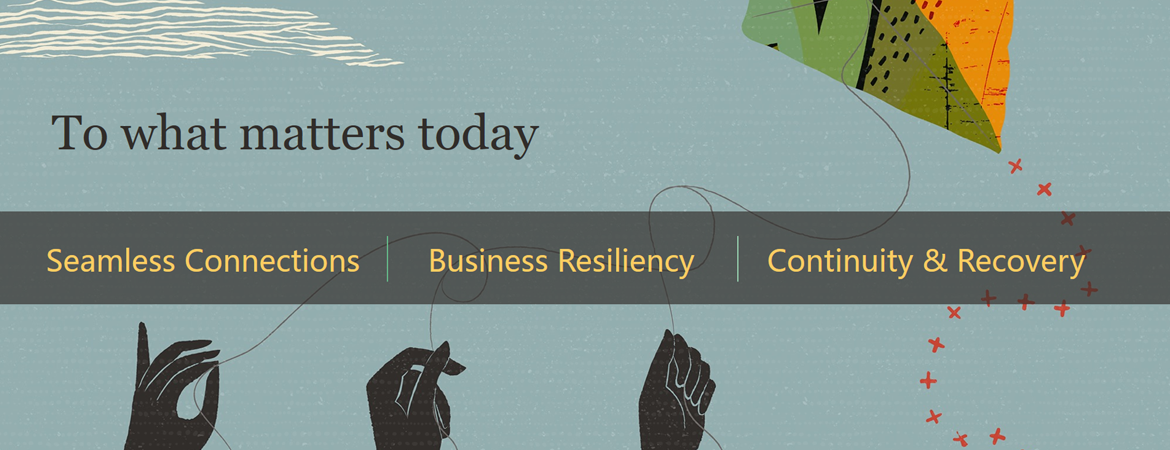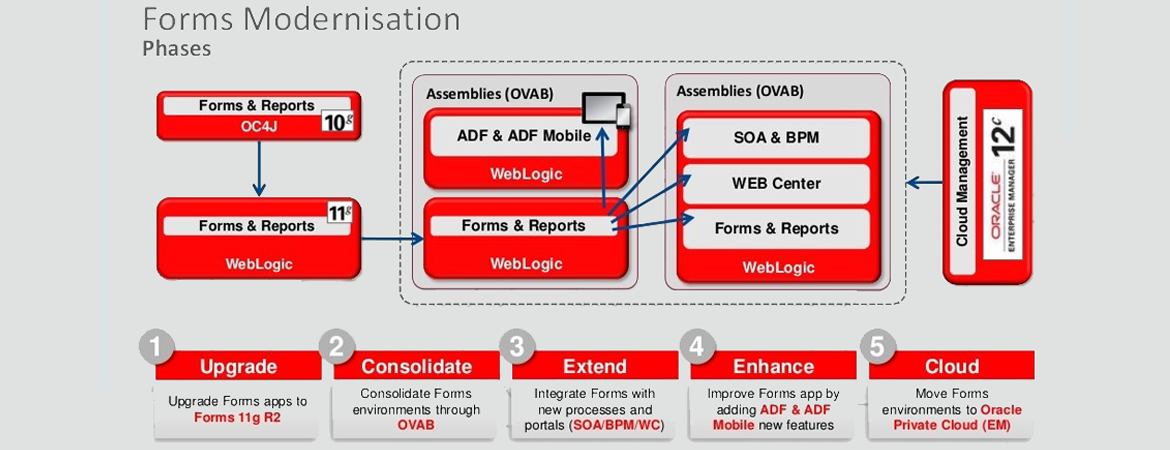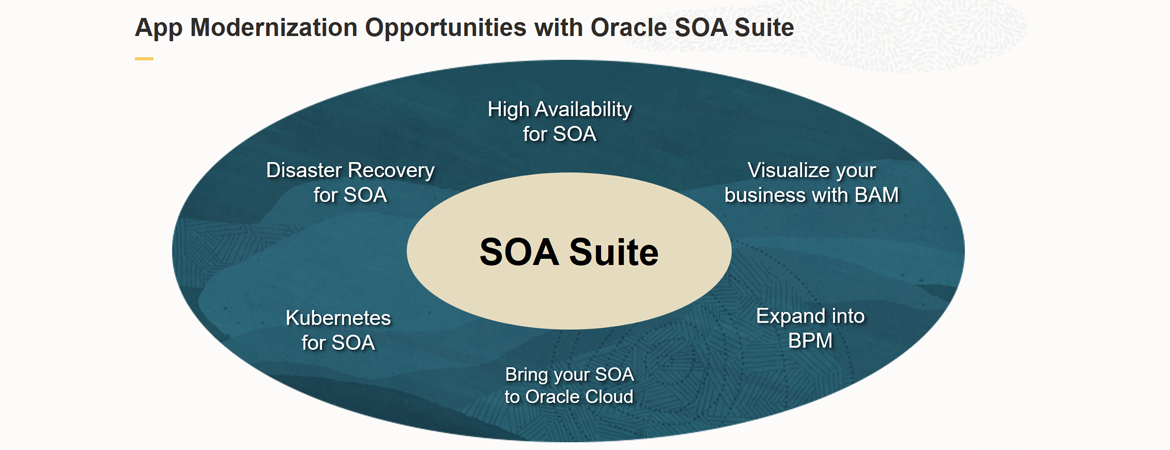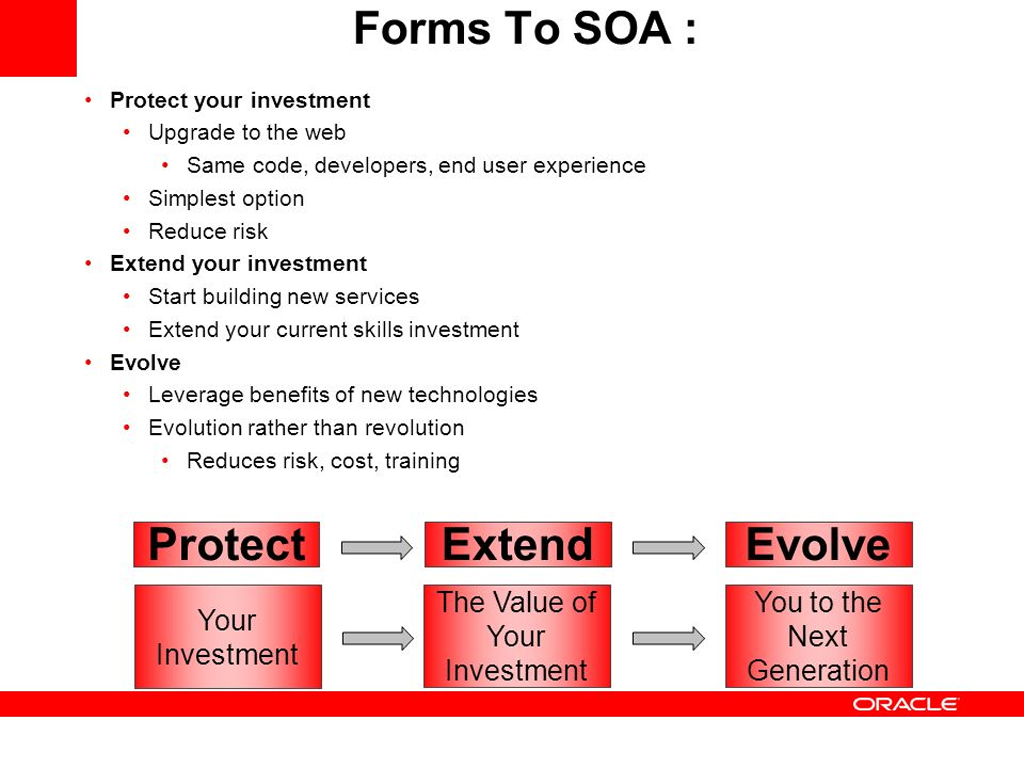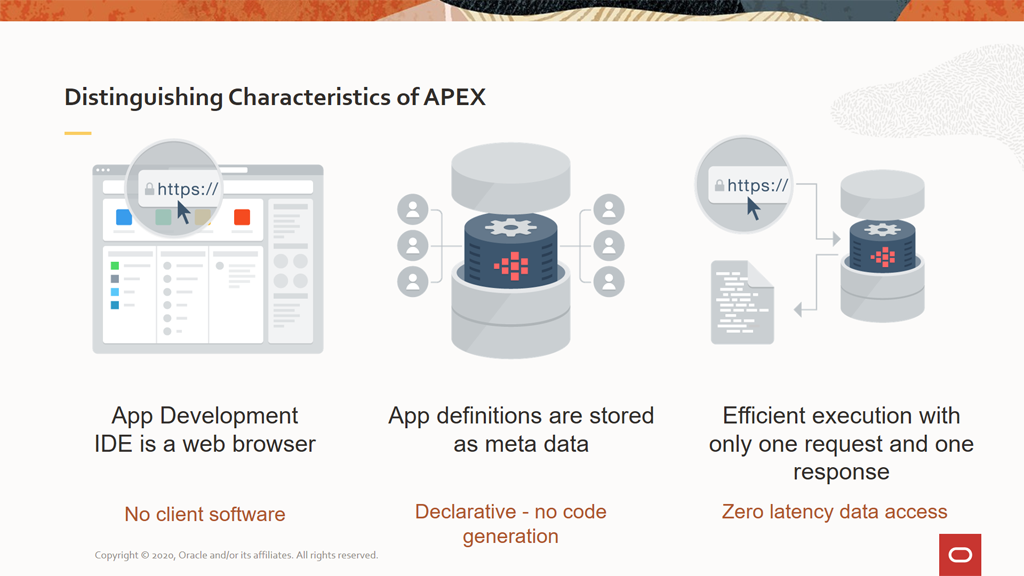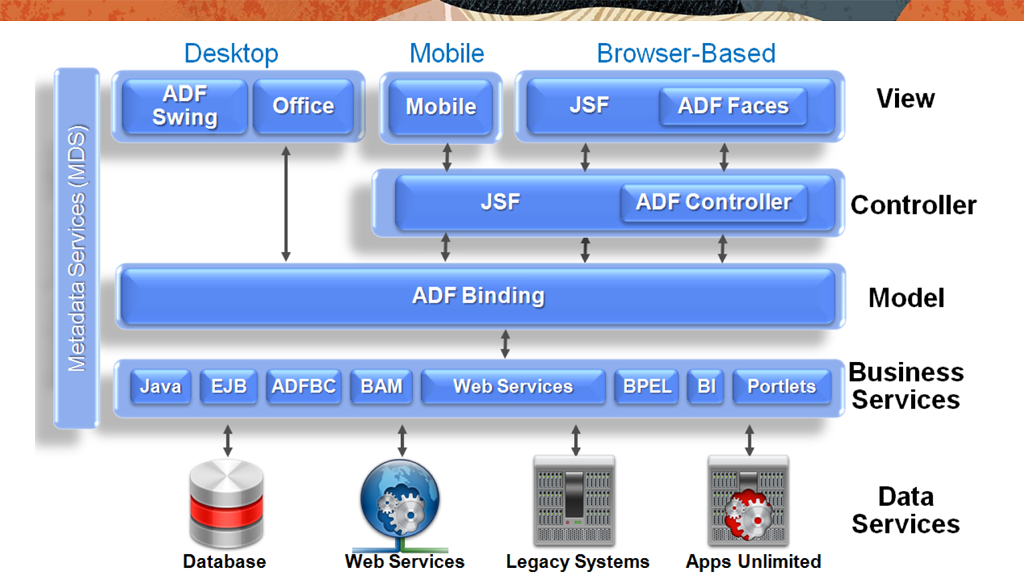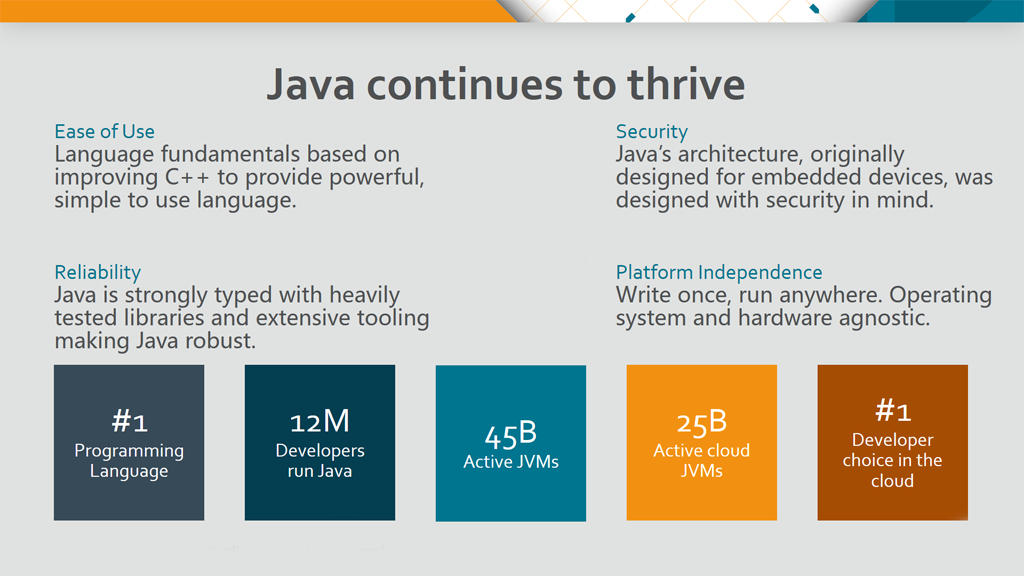Modernize Application
Gain rich new functionality and unparalleled performance while lowering your support costs.
Optimize and secure - Upgrade, Modernize, Integrate
A complete set of Oracle Technology Solutions to Modernice your Application
Modernizing Applications using Oracle Forms, Oracle Apex, Oracle ADF
Oracle APEX is the clear platform of choice for easily transitioning Oracle Forms applications to modern web apps. The same stored procedures and PL/SQL packages work natively in APEX, making it a breeze to develop.
There are several motivations for using Oracle APEX and other Oracle Development Tools to modernize Oracle Forms applications. While such migrations may be non-trivial and take considerable time and effort, the results will be well worth it. Here are some of the top reasons why you should consider such an undertaking.
Forms Modernisation - What is Unique to Oracle? Oracle owns both Forms and FMW; Expertise, experience and product ownership , Consolidation to reduce interim TCO , Assist in skills growth to match migration , OOTB Integration to assist in incremental migration , Executive sponsorship across entire project , Integration of forms at all levels of the project , Complete visibility for start, end and mid-states , Guidance and engagement for the change , Oracle backed partners to assist in migration projects
Usability - Many Oracle Forms apps, especially those developed years ago, are often non-intuitive to use and require extensive end user training and experience to become proficient at using the apps. By contrast, Oracle APEX apps are generally very easy to use and are similar to other modern web apps end users already use.
Responsive - Your users run on a variety of different devices including large desktops, tablets, and even mobile devices and they expect the apps to work equally well on any form factor.
Extended Deployment - When your apps were initially developed in Oracle Forms they may have been designed primarily for use by a small dedicated group. However, the requirements have now changed and the same functionality needs to be rolled out organization wide. For example, leave applications may have previously been handled by employees sending an email to HR. Now it is expected that each employee enter their leave directly into an app.
Java SE Java Platform, Standard Edition (Java SE) lets you develop and deploy Java applications on desktops and servers. Java offers the rich user interface, performance, versatility, portability, and security that today's applications require.
Faster and Simpler Java-based Application Development Oracle ADF is an end-to-end Java EE framework that simplifies application development by providing out-of-the-box infrastructure services and a visual and declarative development experience.
Legacy Modernization: Do It Now to Stay Mobile
The influx of mobile devices has changed the interface between an enterprise and the consumer. The point of sale or information is no longer stationed and all the interactions have become on the move. A tablet or a Smartphone is the hottest thing on any ones hand leading to necessities of "app-linked services" to access the data and use the services online from anywhere.
Competition between service providers has become fiercer; as all want to cater to the ease of the customer mobile and remote access have become common place. To lag behind in technology innovations is nothing less than suicidal for any growing organization who continually wants to turn a profit.
The increase in the number of BYOD work culture has contributed to the rise in the demand for web applications and mobile integrations for working remotely. Newer technologies provide opportunities for such mobile and web integrations. However the older technology which is the foundation of the organization's IT and the augmented data over the years cannot be ignored.
Legacy Modernization is the edge that the organization can adopt for a process leap and service improvisation which the newer technologies are built to provide. A legacy modernization strategy draws its origin from the need to work with legacy data to extract new returns from them keeping in mind the organization's size and the volume of legacy applications and data. Out of the three popular legacy modernization options- rewriting, COTS and vendor legacy modernization; post analysing the scope of the desired new technology, data stored in legacy applications and business rule/process, organizations should choose the most befitting of the options.
Now again, legacy maintenance is a viable and an economic option for an ad-hoc up gradation, but any business which wants to stay and play the field in the days to come has to make legacy modernization as top priority in their long term "To Do" list.





